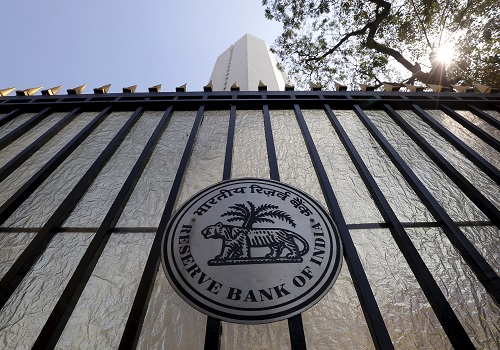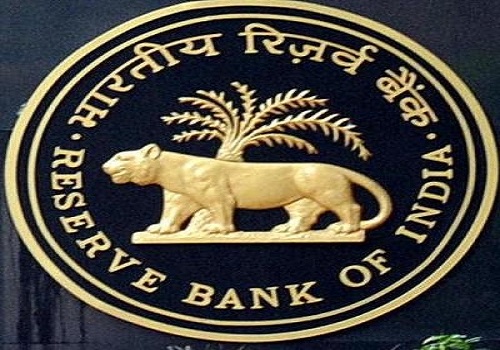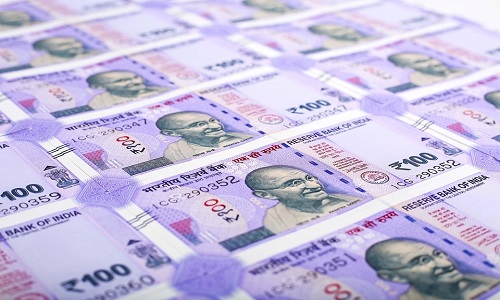Turmeric trading range for the day is 15824-16704 - Kedia Advisory

Follow us Now on Telegram ! Get daily 10 - 12 important updates on Business, Finance and Investment. Join our Telegram Channel
Gold
Gold prices saw a notable uptick, settling at 72277, marking a gain of 0.6%, as investors remained cautious amid ongoing developments in the Middle East. Concerns over potential conflict between Israel and Iran kept investors on edge, supporting demand for safe-haven assets like gold. However, receding expectations of Federal Reserve (Fed) rate cuts for upcoming meetings, coupled with reduced fears of escalating tensions, exerted some pressure on gold prices. United States President Joe Biden's statement indicating non-support for Israel's counterattack on Iran contributed to easing geopolitical tensions, impacting gold's safe-haven appeal. Additionally, Fed policymakers' stance on maintaining restrictive interest rates until convinced of inflation returning to the 2% target further weighed on gold prices. Stronger-than-expected monthly Retail Sales data for March bolstered bond yields and the US Dollar, exerting additional downward pressure on gold. Retail Sales grew by 0.7%, surpassing expectations of 0.3%, with February's figures also revised upwards, indicating robust spending by US households. San Francisco Fed Bank President Mary Daly emphasized the lack of urgency in reducing interest rates, stressing the need to ensure inflation returns to the desired target before considering policy adjustments. From a technical perspective, the market witnessed short covering, with open interest declining by -1.99% to settle at 22291. Despite a significant increase in prices by 434 rupees, gold found support at 71535, with potential testing of 70785 levels if this support is breached. On the upside, resistance is anticipated at 72700, with a move above potentially leading to testing the 73115 levels.
Trading Ideas:
* Gold trading range for the day is 70785-73115.
* Gold gains as investors stayed vigilant over developments in the Middle East.
* US President Joe Biden's stance against Israel's counterattack on Iran.
* Fed rate cut bets for June and July meetings and reduced fears of Iran-Israel tensions pressure Gold.
Silver
Silver prices surged by 1.25% to settle at 83851, driven by heightened safe-haven demand amidst escalating tensions in the Middle East. Traders sought refuge in silver amid geopolitical uncertainties, contributing to robust buying activity. Despite recent strong U.S. economic data indicating a robust labor market and elevated inflation, Federal Reserve Bank of Boston President Susan Collins hinted at the possibility of a couple of interest rate cuts this year, potentially supporting precious metal prices further. Silver's appeal extended beyond its traditional safe-haven status, with strong physical demand observed, particularly from key markets like China and India. The upcoming focus will be on various Fed speeches this week, offering insights into the potential monetary policy trajectory, which could influence silver prices. Boston Fed Bank President Susan Collins expressed optimism about demand slowing down and potentially curbing inflation later in the year. Her forecast of two rate cuts aligns with the latest dot plot, where most Fed members projected the central bank reducing interest rates three times by year-end. From a technical perspective, the market witnessed short covering, with a drop in open interest by -0.67% to settle at 25787 contracts, while prices surged by 1038 rupees. Silver is currently finding support at 83095, with a potential downside test at 82335. Resistance is anticipated at 84320, with a move above potentially leading to prices testing 84785 levels.
Trading Ideas:
* Silver trading range for the day is 82335-84785.
*Silver gained due to traders monitoring Middle East conflict developments
* Despite strong labor market and high inflation, Fed’s Collins is considering interest rate cuts.
* Fed’s Daly emphasized the need for more work to ensure inflation returns to 2%.
Crude oil
Crude oil fell 1% yesterday to 7115, as the market downplayed the prospect of a bigger regional conflagration after Iran's assault on Israel. The International Energy Agency (IEA) reduced its prediction for 2024 oil demand growth, citing lower-than-expected consumption in OECD nations and a decline in industrial activity. The Paris-based energy watchdog cut its growth forecast for this year by 130,000 barrels per day (bpd) to 1.2 million bpd, noting that the release of pent-up demand by top oil importer China after the lifting of COVID-19 limitations had passed. Money managers increased their net long holdings in US crude futures and options in the week ending April 9, according to the US Commodity Futures Trading Commission (CFTC). During the time, the speculator group increased its combined futures and options position in New York and London by 10,841 contracts, totaling 218,390. Iran produces more than 3 million barrels per day (bpd) of crude oil, making it a prominent producer in the Organisation of Petroleum Exporting Countries. Middle East wars, particularly the Israel-Hamas conflict in Gaza, have had no discernible influence on oil production so far. In early April, U.S. weekly imports of Mexican crude oil plummeted to their lowest level on record, as Mexico's state energy corporation Pemex reduced shipments to deliver more oil to its local refineries. Technically, the market is in long liquidation, as open interest has dropped by -32.61% to settle at 4914, while prices have fallen by -72 rupees. Crude oil is now receiving support at 7040, and a move below could see prices test 6966 levels, while resistance is now likely to be seen at 7177, with a move above potentially seeing prices test 7240.
Trading Ideas:
* Crudeoil trading range for the day is 6966-7240.
* Crude oil prices drifted lower after Iran's weekend attack on Israel.
* IEA trims oil demand forecast on weakness in wealthier countries
* Money managers raised their net long U.S. crude futures and options positions
Natural gas
Natural gas prices faced significant downward pressure, settling at 141.3, marking a substantial decline of -4.85%, driven by concerns surrounding a surplus in storage and revised demand forecasts. The reduced feedgas to the Freeport LNG export plant in Texas contributed to lowered demand expectations over the next two weeks, outweighing factors such as decreased drilling activities and forecasts of colder weather in the near future. Despite a drop in output as producers scaled back drilling operations in response to historically low prices in February and March, and anticipation of increased heating demand due to colder weather, natural gas prices remained subdued. Additionally, gas output in the Lower 48 states decreased to 98.8 billion cubic feet per day (bcfd) in April from 100.8 bcfd in March, further reflecting the impact of reduced drilling activities. LSEG's forecast projected a decline in gas demand in the Lower 48 states from 99.3 bcfd to 94.4 bcfd over the next week due to warming weather, before rebounding to 98.1 bcfd in two weeks with cooler temperatures. These revised demand estimates, coupled with the surplus in storage, exerted downward pressure on natural gas prices. From a technical perspective, the market witnessed fresh selling, with open interest increasing by 12.51% to settle at 67133. Despite the significant decrease in prices by -7.2 rupees, natural gas found support at 138.4, with potential testing of 135.6 levels if this support is breached. On the upside, resistance is anticipated at 146.6, with a move above potentially leading to testing the 152 levels.
Trading Ideas:
* Naturalgas trading range for the day is 135.6-152.
* Natural gas dropped on worries about a huge storage surplus.
* Pressure also seen amid forecasts for lower demand over the next two weeks than previously expected.
* U.S. drillers cut the number of gas rigs operating by one to 109, their lowest since January 2022
Copper
Copper prices surged by 1.31%, settling at 831.3, driven by the imposition of new Western sanctions on Russian metals, which shook commodity markets. Both the US and UK implemented bans on deliveries of Russian supplies produced after midnight on Friday, extending to metals such as aluminum, copper, and nickel. These sanctions aim to curtail Russia's revenues from metal exports, which fund its military operations in Ukraine. The restrictions on Russian metal imports into the US and UK further fueled the rally in copper prices. Supporting the upward momentum in copper prices was robust data indicating a significant increase in unwrought copper imports in China, the world's largest consumer of the metal. March saw a notable surge of 16% to 474,000 tonnes, underlining strong demand dynamics in the market. Additionally, optimism surrounding copper production improvements from Chile's state-run miner, Codelco, contributed to bullish sentiment. Antofagasta CEO Ivan Arriagada echoed sentiments of a favorable market scenario, citing an improving global economy and increasing demand for copper. These factors, combined with supply constraints, suggest the potential for copper prices to exceed last year's levels in 2024. From a technical standpoint, the market witnessed short covering, with a notable drop in open interest by -7.1% to settle at 4226. Despite a significant increase in prices by 10.75 rupees, copper found support at 822.9, with potential testing of 814.4 levels if this support is breached. On the upside, resistance is anticipated at 837.1, with a move above potentially leading to testing the 842.8 levels.
Trading Ideas:
* Copper trading range for the day is 814.4-842.8.
* Copper gains on fresh sanctions on Russian metals
* Codelco is poised to improve production this year and begin to climb from its lowest dip in a quarter century
* Chile's Antofagasta CEO foresees higher 2024 copper prices
Zinc
Zinc prices experienced a decline of -0.59% to settle at 244.75, driven by data indicating an uptick in China's refined zinc production. China, a key player in the zinc market, saw its refined zinc production increase by 4.57% month-on-month, contributing to a year-on-year rise of 1.63% in total output from January to March. Positive signals emerged from China's manufacturing sector, with factory activity expanding at the fastest pace in over a year, aligning with similar trends observed in the US and Germany. The International Lead and Zinc Study Group (ILZSG) forecasted a slight increase in global zinc mine production and refined zinc output for 2024, with notable contributions expected from China, India, Mongolia, Peru, and Russia. Despite the projected increase in production, the global refined zinc market is anticipated to exhibit a surplus of 367,000 tons. Additionally, global demand for refined zinc is forecasted to rise by 2.5% year on year to 13.93 million tons, with China expected to drive much of this demand growth. From a technical standpoint, the zinc market witnessed long liquidation, with a drop in open interest by -13.88% to settle at 2791 contracts, while prices declined by -1.45 rupees. Support for zinc is identified at 239.8, with a potential downside test at 234.7. Conversely, resistance is likely at 249.6, with a move above potentially leading to prices testing 254.3 levels.
Trading Ideas:
* Zinc trading range for the day is 234.7-254.3.
* Zinc dropped as China's refined zinc production increased by 4.57% month-on-month.
* The global refined zinc output was forecasted to increase by 3.3% year on year to 14.3 million tons
* China's factory activity expanded at the fastest pace in over a year in March
Aluminium
Aluminium prices surged by 2.65% to settle at 232.45, driven by new sanctions imposed by the US and UK on Russian metals. These sanctions aim to restrict Russia's revenue from metal exports, particularly aluminium, which is crucial for funding its military operations in Ukraine. The ban on Russian metal supplies and imports into the US and UK has sparked concerns about market uncertainty, with analysts suggesting that it may lead to a flood of old stocks hitting the market. Meanwhile, China's aluminium output in March increased by 4.19% year-on-year to 3.555 million metric tons, indicating a rebound in production as the impact of the Chinese New Year holidays faded. The resumption of production in aluminium smelters and the rise in aluminium liquid output contributed to the growth in output. With the first batch of production resumption expected to be completed by mid-April, production levels are anticipated to further increase in April. In addition to production trends, Goldman Sachs revised its forecast for China's economic growth this year to 5.0%, up from 4.8% previously, signaling optimism about the country's economic prospects. From a technical perspective, the aluminium market witnessed short covering, with a drop in open interest by -9.63% to settle at 3078 contracts, while prices rose by 6 rupees. Support for aluminium is identified at 229.3, with a potential downside test at 225.9, while resistance is likely at 237.1, with a move above potentially leading to prices testing 241.5 levels.
Trading Ideas:
* Aluminium trading range for the day is 225.9-241.5.
* Aluminium prices rise following new sanctions on Russian metals
* China's aluminium output was 3.555 million mt in March, up 4.19% YoY.
* The first batch of production resumption may be completed in mid-April, boosting production in April
Cotton
Cotton candy prices experienced marginal gains, settling up by 0.1% at 59920, primarily driven by short covering following a previous drop in prices amidst expectations of improved crop conditions in countries like Australia. The International Cotton Advisory Committee (ICAC) projected an increase in various metrics for the upcoming season, 2024-25, including cotton-producing area, production, consumption, and trade. However, despite these optimistic projections, ICE prices declined due to anticipated higher supply and reduced demand from mills. In India, the Cotton Association of India (CAI) and the Cotton Corporation of India (CCI) revised their cotton production estimates upwards for the current season, indicating robust growth in production. However, for the marketing year (MY) 2024/25, India's cotton production is expected to decrease by two percent due to farmers shifting acreage to other crops offering higher returns. Conversely, mill consumption is forecasted to increase by two percent, driven by improved demand for yarn and textiles in major international markets. China's cotton imports for MY 2024/25 are forecasted to rise to 2.4 million metric tons (MMT), driven by higher domestic and international demand for textile and apparel products. Similarly, production is expected to remain stable in Xinjiang but decline in other regions. Technically, the cotton candy market witnessed short covering, with a drop in open interest by -0.95%, indicating a temporary easing of bearish sentiment. Despite a modest increase in prices by 60 rupees, support levels are identified at 59760, with potential testing of 59610 levels if breached. Conversely, resistance is likely at 60100, with a move above potentially leading to testing the 60290 levels.
Trading Ideas:
* Cottoncandy trading range for the day is 59610-60290.
* Cotton gains on short covering after prices dropped amid prospects of a better crop.
* The ICAC's projections for 2024-25 suggest that the cotton-producing area may increase by 3 per cent from the 2023-24 acreage
* For 2024/25 China’s cotton imports are forecast at 2.4 million metric tons
* In Rajkot, a major spot market, the price ended at 28299.45 Rupees dropped by -0.6 percent.
Turmeric
Turmeric prices surged by 1.35% to settle at 16330, driven by below-normal supplies and active festive demand. However, the upside potential was capped by expectations of new arrivals from the Marathwada region in Maharashtra. The influx of new crops, including 5,400 bags at the Nanded spot market, 10,500 bags at Nizamabad, and 18,500 bags in Erode, contributed to increased market supply, with levels surpassing those of the previous week. Despite the increase in arrivals, turmeric production in 2023-24 is estimated to be lower at 10.74 lakh tonnes compared to 11.30 lakh tonnes in the previous year. Demand for quality turmeric remains strong in growing regions such as Sangli, Basmat, and Hingoli, driven by expectations of an increase in sowing area in the current year. However, demand destruction has occurred as prices surged, leading many to adopt a hand-to-mouth approach. Turmeric exports during April-January 2024 declined by 3.52% compared to the same period in the previous year, with January 2024 witnessing a 15.96% drop compared to January 2023. In Nizamabad, a major spot market, turmeric prices ended at 16000.3 Rupees, marking a 0.42% gain. From a technical standpoint, the market witnessed fresh buying, with a slight increase in open interest by 0.09% to settle at 17195 contracts, while prices rose by 218 rupees. Support for turmeric is identified at 16078, with a potential downside test at 15824, while resistance is likely at 16518, with a move above potentially leading to prices testing 16704 levels.
Trading Ideas:
* Turmeric trading range for the day is 15824-16704.
* Turmeric gains amid below normal supplies and active festive demand.
* New crop supply has increased by over 25% in parts of Tamil Nadu, Telangana, and Andhra Pradesh
* The Ministry of Agriculture first advance estimate for turmeric production in 2023-24 is estimated at 10.74 lakh tonnes
* In Nizamabad, a major spot market, the price ended at 16000.3 Rupees gained by 0.42 percent.
Jeera
Jeera prices experienced a notable decline of -3.28%, settling at 21665, primarily due to the anticipation of increased arrivals putting pressure on the market. However, the downside was limited as global buyers continued to prefer Indian jeera amidst tightening global supplies. The market saw daily arrivals of 10,000 to 12,000 bags in Rajkot Mandi, surpassing current demand levels. New arrivals in Gujarat and Rajasthan have surged in recent weeks, contributing to the overall increase in production. The cumin production in Gujarat is estimated to reach a record 4.08 lakh tonnes, while Rajasthan also witnessed a significant increase of 53%. Favorable weather conditions and expanded sowing areas have led to a doubling of production compared to the previous year. Despite the surge in production, trade analysts anticipate a substantial increase in cumin exports, expected to reach about 14-15 thousand tonnes in February 2024. However, jeera exports during Apr-Jan 2024 declined by 25.33% compared to the same period in the previous year. This decline in exports, coupled with the increase in production, has weighed on prices. Nevertheless, January 2024 saw a notable increase in exports compared to both the previous month and the same period in 2023, indicating potential shifts in market dynamics. Technically, the jeera market witnessed fresh selling, with open interest increasing by 3%, while prices dropped significantly by -735 rupees. Support levels are identified at 21420, with potential testing of 21160 levels if breached. On the upside, resistance is likely at 22070, with a move above potentially leading to testing the 22460 levels.
Trading Ideas:
* Jeera trading range for the day is 21160-22460.
* Jeera dropped as there is a possibility of further increase in arrivals pressure in the market.
* There will be a huge increase in cumin exports, which will reach about 14-15 thousand tonnes in February 2024.
* New arrivals have started in Gujarat since last 20-25 days and new arrivals have started in Rajasthan also since last 15 days.
* In Unjha, a major spot market, the price ended at 23062.15 Rupees dropped by -1.04 percent.
Views express by all participants are for information & academic purpose only. Kindly read disclaimer before referring below views. Click Here For Disclaimer












 320-x-100_uti_gold.jpg" alt="Advertisement">
320-x-100_uti_gold.jpg" alt="Advertisement">










